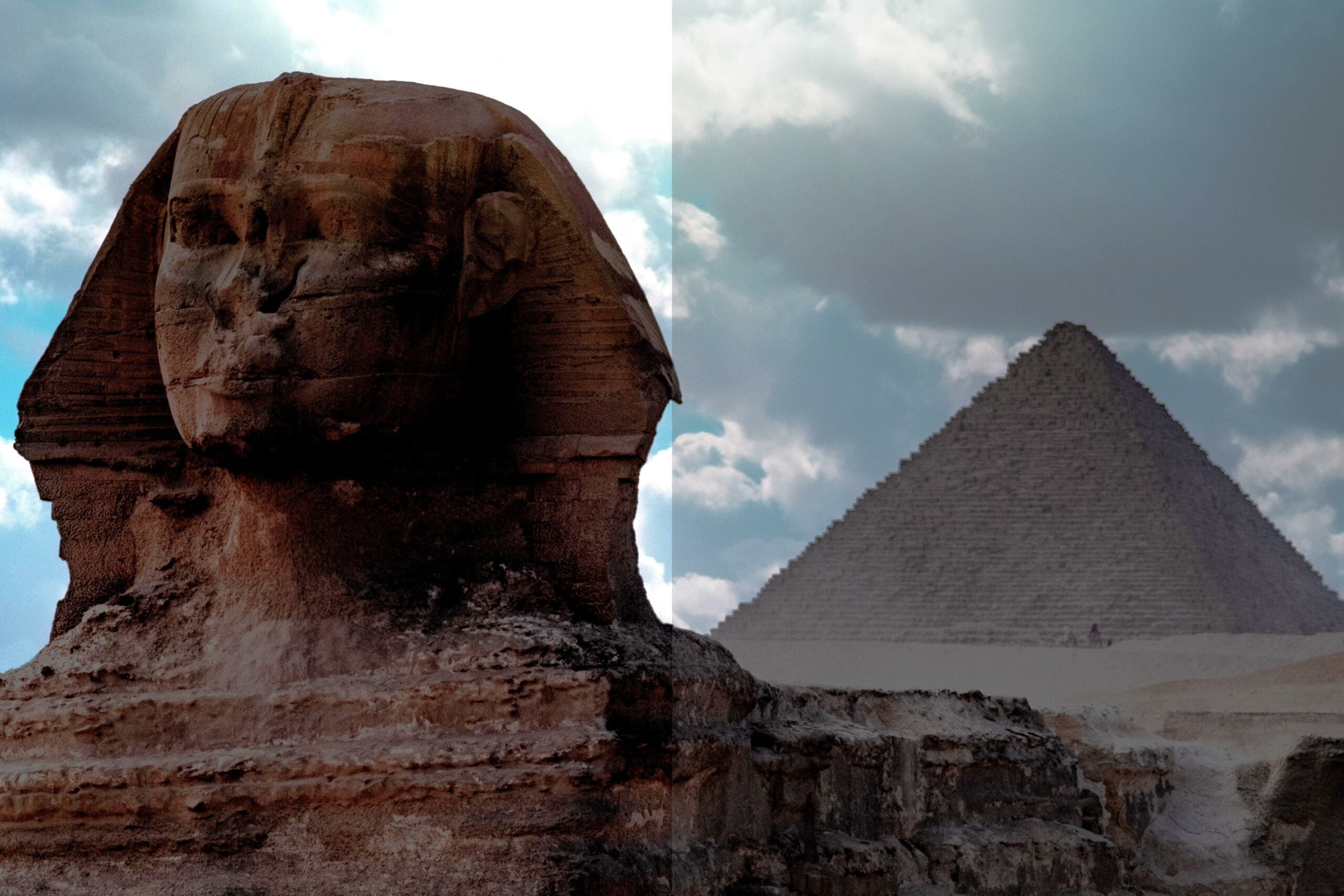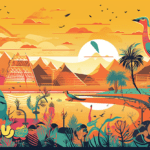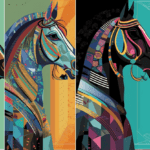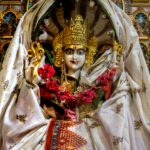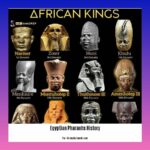Delve deep into the annals of history and prepare to embark on a journey through the enchanting world of famous Egyptian mythology. With a keen eye for detail and a knack for storytelling, we will peel back the layers of time and bring to life the mesmerizing tales of gods, goddesses, pharaohs, and epic adventures that have captivated generations. Get ready to be immersed in the rich tapestry of ancient Egypt’s cultural narratives, as we unravel the timeless mysteries and spiritual significance held within these captivating tales of the Nile.
Famous Egyptian Mythology
Egyptian mythology is a captivating tapestry of gods, goddesses, pharaohs, and epic adventures that have enthralled generations. From the creation myth of Ra to the gripping tales of Osiris, Isis, and Horus, the enchanting world of famous Egyptian mythology is a treasure trove of wonder and spirituality.
The Creation Myth of Ra
In the realm of Egyptian mythology, the story of Ra’s emergence from an egg and the subsequent naming of all living beings, including mankind, holds a special place. Picture this: Ra, the sun god, rising and illuminating the world with his divine light. With each day, he journeys across the sky, sharing his radiant energy and bestowing life upon the earth. As night falls, he embarks on a treacherous journey through the underworld, battling the forces of darkness, only to be reborn the next day. This captivating creation myth symbolizes the enduring cycle of life, death, and resurrection.
“The tale of Ra’s emergence from an egg and his divine naming is a mesmerizing glimpse into the beginnings of creation, as the sun god brings light, life, and purpose to all living beings.”
The Myth of Osiris and Isis
Another iconic tale from Egyptian mythology is the story of Osiris and Isis. Osiris, the benevolent ruler of Egypt, fell victim to the treachery of his brother Set, who killed him out of envy and ambition for the throne. Isis, wife and sister to Osiris, embarked on a courageous quest to find and resurrect her beloved husband. Through her unwavering devotion and the power of her magic, Isis managed to revive Osiris, albeit not without some challenges. This enduring myth serves as a reminder of love’s healing power and the triumph of good over evil.
“The myth of Osiris and Isis showcases the unwavering love between the divine couple and the triumph of good over evil, as Isis’s unwavering devotion overcomes adversity and brings Osiris back to life.”
The Myth of Horus and Set
Following the resurrection of Osiris, his son Horus engaged in a fierce battle with Set, seeking to avenge his father’s death and claim the throne of Egypt. This epic struggle between Horus, the symbol of righteousness and order, and Set, the embodiment of chaos and evil, captivated the ancient Egyptians. The story portrays Horus’s determination and bravery as he overcomes numerous trials and tribulations to restore order and ensure his rightful place as ruler of Egypt. The myth of Horus and Set stands as a testament to the unyielding spirit of justice and the eternal struggle between light and darkness.
“The myth of Horus and Set epitomizes the eternal struggle between the forces of good and evil, as Horus fights valiantly to avenge his father’s death and restore harmony and order to Egypt.”
The Myth of Anubis and the Weighing of the Heart
One of the most intriguing myths in Egyptian mythology revolves around Anubis, the jackal-headed god of embalming and the afterlife. In ancient Egyptian belief, Anubis played a crucial role in judging the souls of the deceased. Every soul had their heart weighed on a cosmic scale against Ma’at, the feather of truth, determining their fate in the afterlife. If the heart was found to be lighter than the feather, the soul was deemed worthy of eternal paradise. However, if the heart proved heavier, it was devoured by a fearsome monster, condemning the soul to eternal unrest. This captivating myth underscores the importance of leading a virtuous life and holding true to one’s moral compass.
“The myth of Anubis and the Weighing of the Heart offers profound insight into ancient Egyptians’ emphasis on morality and righteousness, reminding us of the significance of living a virtuous life in order to find eternal peace.”
Incorporating Ancient Egyptian Mythology into Modern Understanding
The rich tapestry of famous Egyptian mythology provides a captivating window into the beliefs, cosmology, and spirituality of ancient Egypt. These myths, frequently depicted in Egyptian writings and art, continue to fuel our imagination and leave us in awe of the wonders of this ancient civilization. From the awe-inspiring creation myth of Ra to the gripping tales of Osiris, Isis, Horus, and Anubis, the allure of Egyptian mythology has stood the test of time.
“The enthralling tales of famous Egyptian mythology mesmerize us to this day, revealing ancient beliefs and offering a glimpse into the captivating world of gods, goddesses, and epic adventures that still hold meaning and fascination for modern readers.”
Egyptian mythology is filled with fascinating tales and legends, but none are as captivating as the famous Egyptian myths. From the enigmatic stories of Osiris and Isis to the epic adventures of Ra, these ancient tales have intrigued and captivated scholars and enthusiasts for centuries. If you’re interested in exploring the rich tapestry of Egyptian mythology, click here to dive into the world of famous Egyptian myths: famous egyptian myths. Prepare to be transported to a realm of gods, goddesses, and extraordinary heroics that will leave you spellbound. Don’t miss out on this opportunity to unravel the secrets of ancient Egypt and immerse yourself in its vibrant mythology.
the power of love and resurrection. – Anubis, the jackal-headed god, is the guide of souls to the afterlife. – Bastet, the cat goddess, is revered for her role in protection and fertility. – The rich and complex pantheon of Egyptian mythology continues to captivate and inspire people today.]
[youtube v=”uZe49S1Q8b8″]
Egyptian mythology is a captivating tapestry of gods, goddesses, pharaohs, and epic adventures. Within this expansive mythological realm, there are several essential figures that stand out, including Ra, Horus, Osiris, Seth, Anubis, and Bastet. These deities play significant roles in shaping the Egyptian worldview and understanding of the cosmos.
The creation myth of Ra, also known as the Sun God, symbolizes the enduring cycle of life, death, and resurrection. According to this myth, in the beginning, there was nothing but a great chaotic ocean. Amid this primordial chaos emerged a sacred pyramid-shaped mound called Benben. Upon this mound, a lotus flower blossomed, and from within it came Ra, bringing light and life to the world.
Ra, as the Sun God, generated the first generations of gods. Shu, the God of the air, and Tefnut, the Goddess of rain, were born from Ra’s divine power. The universe was filled with vast masses of primordial waters, and Shu and Tefnut plunged into these waters to explore their immensity. This exploration took longer than Ra anticipated, causing him distress and fear of never seeing his children again. To find them, Ra sent out his best messenger, and eventually, Shu and Tefnut returned safely. In this moment of immense joy, human beings were born from Ra’s tears, marking the beginning of humanity.
As the generations of gods continued, Geb, the God of the earth, and Nut, the Goddess of the sky, were born from the union of Shu and Tefnut. With their birth, the sky and the earth were created, forming the foundation of the physical world. Ra, recognizing their power and importance, bestowed upon them the title of the first Pharaohs, symbolizing their sovereignty over the universe.
The god Ra graced Egypt with several sacred animals, such as the ox and the lion, but his greatest offering was the creation of the Nile River. This river became the lifeblood of Egypt, providing sustenance and fertility to its shores. It was along the Nile that a great civilization flourished, honoring and glorifying the gods.
However, Ra had a premonition that his grandchildren would give birth to a new generation of gods who would ultimately bring about the end of his reign. Therefore, he forbade the sky and the earth from having any offspring. But Nut and Geb, in defiance of Ra’s command, conceived children: Osiris, Isis, Seth, and Nephthys.
These four siblings would reshape the course of Egyptian mythology. Osiris, the beloved husband of Isis, tragically met his demise at the hand of his jealous and ambitious brother, Seth. Seth, the god of destruction, usurped the throne that was rightfully Osiris’s and unleashed a reign of terror.
Osiris, after his death, became the god of the underworld and the ruler of the dead. His wife, Isis, used her divine powers to mummify Osiris and successfully resurrect him. However, he could no longer reign over the world of the living. Instead, Osiris had a son named Horus, who swore to avenge his father’s death and reclaim his rightful place as the ruler of Egypt.
The epic clash between Horus and Seth, which lasted for many years, demonstrated the struggle between good and evil. During their battles, Horus lost his eyes, but with the help of Hathor, the goddess of love, his vision was restored. The court of gods ultimately ruled in favor of Horus, and Seth was humiliated and defeated.
With Horus assuming the throne, a new era of prosperity and stability dawned upon Egypt. The reign of Horus marked the beginning of a lineage of pharaohs who claimed to be descendants of the gods. His divine rule brought order, justice, and the continuation of Egyptian civilization.
Ra, the Sun God, continued to hold immense significance even after relinquishing his power. He traversed the skies during the day, illuminating the world with his solar boat. However, during the night, he descended into the underworld, facing the formidable serpent Apophis, embodiment of chaos, who aimed to devour his ship and plunge the world into eternal darkness. With the assistance of Set, the god of destruction, Ra successfully defended his vessel against Apophis.
Anubis, the jackal-headed god, serves as the guide of souls to the afterlife. He is associated with death, embalming, and the protection of tombs and cemeteries. Anubis played a crucial role in the funeral rites, transforming the body of Osiris, the first mummy, and leading the deceased through the judgment of the heart ceremony. Thoth, the god of knowledge, balanced the scales of judgment, determining whether the heart was pure and righteous.
Bastet, the cat goddess, represents protection and fertility. Cats were considered sacred animals in ancient Egypt, revered for their ability to ward off rodents and snakes. Bastet was associated with the sun, accompanying Ra during the day and transforming into a vigilant cat at night. She was worshipped throughout Egypt, and harming a cat was considered a sacrilege.
The rich and complex pantheon of Egyptian mythology continues to captivate and inspire people today. The stories of Ra, Horus, Osiris, Seth, Anubis, and Bastet serve as a testament to the enduring power of myth and the human desire to understand the mysteries of the cosmos and the nature of divinity. Through these tales, the ancient Egyptians sought to make sense of their world and find meaning in the cycles of life, death, and rebirth.
FAQ
Question 1: What is the creation myth of Ra?
Answer: According to Egyptian mythology, Ra emerged from an egg and named all living beings, including mankind. This creation myth highlights Ra’s significance as the sun god and illustrates his role in bringing life to the world.
Question 2: Who are Osiris and Isis in Egyptian mythology?
Answer: Osiris and Isis were revered deities who ruled over Egypt until Osiris was killed by his brother Set. However, Isis, the goddess of magic and wisdom, resurrected Osiris and played a crucial role in their quest to restore order and maintain balance in the ancient Egyptian world.
Question 3: What is the myth of Horus and Set?
Answer: Following Osiris’ death, his son Horus and Set, another brother, engaged in a fierce battle for the throne of Egypt. The myth of Horus and Set symbolizes the struggle between good and evil and represents the ongoing conflict between chaos and order in Egyptian mythology.
Question 4: What is the myth of Anubis and the Weighing of the Heart?
Answer: In Egyptian mythology, Anubis, the god of embalming, judged the souls of the deceased during the Weighing of the Heart ceremony. He determined whether the heart of the individual was lighter than a feather, which would grant them access to the afterlife, or heavy with wrongdoing, condemning them to the underworld.
Question 5: How do these myths provide insight into ancient Egyptian beliefs?
Answer: These myths were a fundamental aspect of ancient Egyptian religion and offer valuable insights into their beliefs and cosmology. They shed light on the importance of gods and goddesses, the concept of resurrection and the afterlife, as well as the eternal struggle between chaos and order, which shaped the ancient Egyptian worldview.
